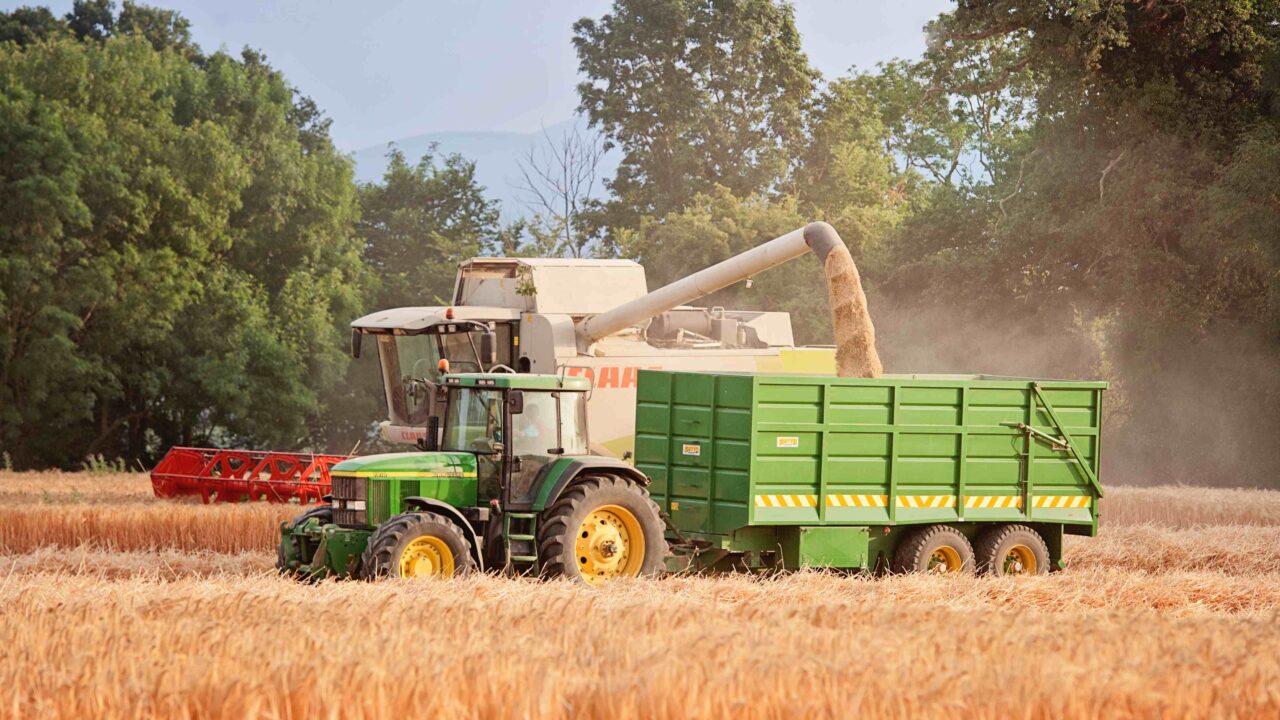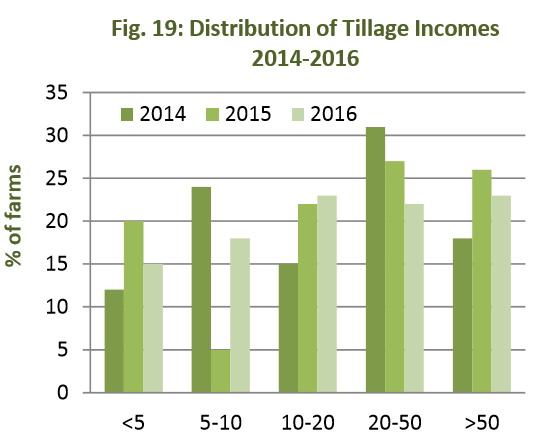Teagasc has predicted another tough year for the tillage sector, and even into the next five to seven years. Weather conditions are seriously challenging the competitiveness of the sector, while high levels of existing global stocks suggest cereal prices will not improve for some time.
In 2016, tillage farmers saw a 9% drop in average farm income. Across the 7,387 tillage farms represented by the Teagasc National Farm Survey, the average income was €30,816 – down from €34,303 in 2015.
According to Teagasc, many tillage farms would have a significant cattle enterprise and, as such, farm income was also affected by lower cattle prices in 2016.
Gross output value on tillage farms saw no change year-on-year, remaining at €112,435 in 2016. Direct payments increased in 2016 by 8%, mainly due to additional payments under the Basic Payment Scheme (BPS) which had been withheld in 2015, and the roll-out of the Green, Low-Carbon, Agri-Environment Scheme (GLAS).
Tillage farms received the highest direct payments, with the average payment to the value of €26,327. This was mainly driven by their larger farm size – the average tillage farm is 67ha, compared to the national average of 47ha.
The survey revealed the sector is heavily reliant on direct payments, with support payments making up 85% of farm income.
Total costs of the average tillage farm amounted to €81,619, representing a 4% increase year-on-year. Direct production costs increased by 4% in 2016 on average.
The tillage sector is now competing with expanding dairy farmers in the agri-land market; this was reflected in the 4% increase in overhead costs, driven by an increase in conacre rental and land improvement costs.
Some 34% of tillage farms had borrowings in 2016, with the average level of debt at €80,590. Although tillage farms had the second highest average debt figure, their debt to income ratio was one of the lowest at 1.62, in comparison to 2.08 in the sheep sector and 1.97 on cattle farms.
Distribution of income
Between 2014 and 2016, there was a shift in the proportion of tillage farmers in the different income categories. Most notable was the increase in the proportion of farmers earning between €5,000 and €10,000, and the decline in the number of farms in the higher-income categories.
Some 18% of tillage farmers earned, on average, between €5,000 and €10,000 in 2016 – a significant increase from 5% in 2015.
Still, quite a large proportion of tillage farmers earned an income of over €50,000, at 23%. However, this figure was down slightly on the previous year, when 26% of farms were in this income category.
The proportion of tillage farmers earning between €20,000 and €50,000 saw a large drop, from 31% in 2014 to 22% in 2016.


